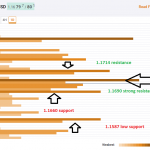The central bank of the United States (a.k.a. the Federal Reserve) may hike its overnight lending rate in December. Committee members are also discussing plans to phase out the reinvestment of principal on balance sheet securities. Translation? Borrowing costs are set to move higher.
The Fed is tightening for the first time in nearly a decade. In so doing, it is implicitly signaling faith in the U.S. economy’s ability to accelerate. The question investors might want to ask is whether or not that conviction is misplaced.
For one thing, if the U.S. economy continues to expand at the same sub-par recovery rate of 2.2% per year, stock valuations will move from overvalued to insanely valued. Consider the ratio of total U.S. stock market capitalization to the broadest quantitative measure of U.S. economic activity, gross domestic product (GDP). With total market cap at nearly $21.6 trillion and GDP at at roughly $17.9 trillion, the ratio sits at 120.8%. The historical average since 1970? About 72.5%.

Investors should recollect that Warren Buffett described Market-Cap-To-GDP as the “best single measure of where valuations stand at any given moment.” It follows that stocks are more expensive than they were before the financial collapse in 2008, though they are less expensive than they were prior to the tech wreck in 2000. If the ratio reverts to the historical mean of 72.5%? Then hold-n-hope advocates should prepare themselves for stock prices lose HALF of their current value.
There are other concerns for investors should the economy prove less resilient than the Federal Reserve would like us to believe. Higher borrowing costs could force American companies to curtail the debt that they’ve raised to buy back shares of their own stock. Why is this so problematic? Not only would stock prices struggle to move higher if corporations are not buyers of as many shares as they have been in the past, but a lessening in stock buybacks would reduce the perception of corporate profitability.

















Leave A Comment